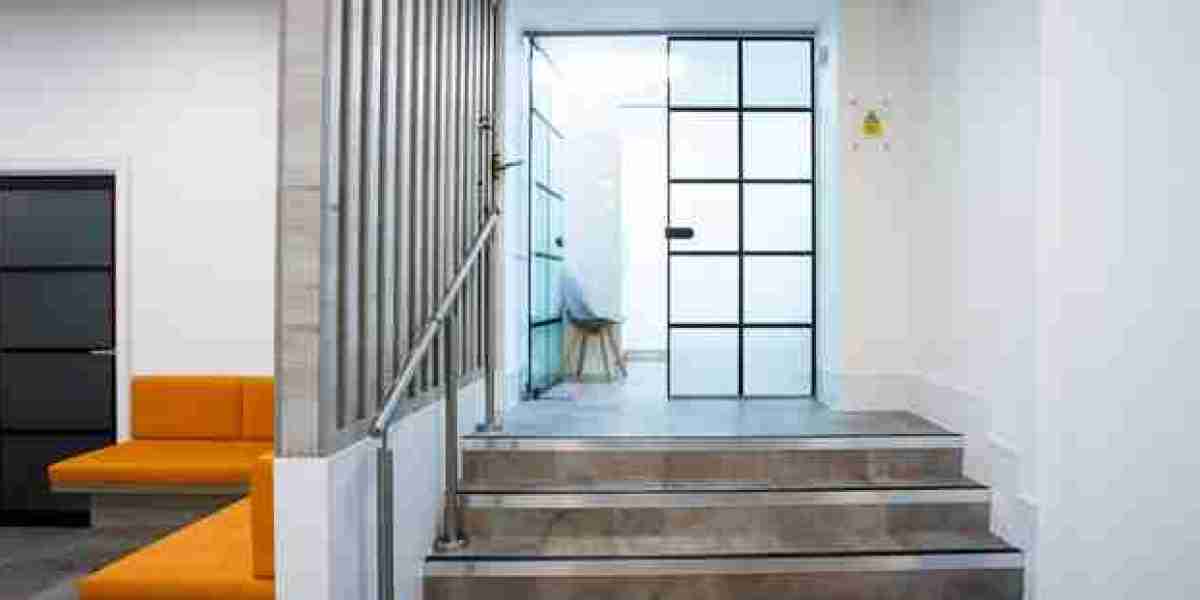Renovating a dental practice is more than just a visual makeover, it’s an investment in both patient satisfaction and operational efficiency. In today’s competitive landscape, dental clinics are expected to offer more than excellent clinical care; patients now look for comfort, aesthetics, and a seamless experience from the moment they walk in.
A well-executed renovation doesn’t just modernise a space; it elevates your brand, improves workflow, and fosters trust. In this blog, we explore the essential features to include in your dental office renovation plan to ensure it’s not only stylish, but also strategic.
Reception and Waiting Area Design
Your reception area is the first touchpoint for patients, its design sets the tone for the entire experience. A tired, cluttered space can subconsciously suggest outdated technology or inattentive service, while a fresh, well-planned area communicates professionalism and care.
Key considerations include:
- Comfortable and supportive seating: Choose materials that are easy to clean yet inviting.
- Natural lighting: Consider large windows, skylights or light-filtering blinds to create a bright and open feel.
- Calming colours: Soft neutrals, pastel tones, and nature-inspired palettes help to reduce anxiety.
- Integrated technology: Self-check-in kiosks or digital displays can streamline the patient journey.
- Accessibility: Ensure there’s enough space for wheelchair manoeuvrability and easy-to-read signage.
Feature | Purpose | Benefit |
Soft Lighting | Reduces clinical harshness | Calms patients |
Acoustic Materials | Reduces noise from treatment rooms | Enhances privacy |
Digital Sign-in Systems | Speeds up admin tasks | Improves first impressions |
Optimised Treatment Rooms
Functionality is everything in a treatment room. A smart layout ensures smooth movement for dental staff, while creating a relaxing environment for patients.
Consider the following upgrades:
- Ergonomic design: Position chairs, cabinets and tools for maximum efficiency and comfort.
- Sound insulation: Helps maintain a peaceful atmosphere, especially in open-plan surgeries.
- Modern finishes: Sleek surfaces not only look good but are easy to sterilise and maintain.
- Integrated dental technology: Design rooms to accommodate built-in screens, imaging systems and other digital equipment.
By aligning your renovation with the principles of good dental practice design you can dramatically improve the patient journey from consultation to treatment while also making the workspace more functional for clinicians.
Importance of Lighting and Natural Elements
Lighting is one of the most underrated yet impactful elements in dental practice refurbishment. Natural light in particular has been shown to improve mood, reduce anxiety, and even lower perceived pain levels among patients.
Design ideas for enhancing light and nature:
- Install skylights or clerestory windows where privacy is a concern.
- Use frosted or etched glass partitions to bring light deeper into the space.
- Incorporate indoor plants or green walls for a calming visual break.
- Choose biophilic textures like wood or stone for surfaces and décor.
- Ensure LED lighting systems are dimmable and layered to suit different procedures.
These thoughtful design elements not only benefit patients but also improve staff morale and productivity key considerations in modern dental practice design.
Efficient Workflow and Staff Areas
A great dental practice layout doesn’t just cater to patients it should also empower your staff. Thoughtful zoning and intuitive flow can prevent bottlenecks, reduce fatigue, and increase daily efficiency.
Staff-friendly features to include:
- Dedicated sterilisation areas: Positioned between surgeries to support instrument turnaround.
- Smart storage solutions: Built-in cabinetry and pull-out drawers keep tools within reach but out of sight.
- Private staff break areas: Comfortable, well-equipped spaces for relaxation or admin work.
- Clear pathways: Minimise unnecessary steps between zones like reception, labs, and surgeries.
- Flexible design: Modular cabinetry and mobile carts allow you to adapt the layout as needed.
An often overlooked yet vital element in dental practice refurbishment is the inclusion of well-organised staff spaces.
Technology Integration and Sustainability
A forward-thinking renovation must embrace both technological and environmental advancements. Investing in the right systems now can save money and reduce your environmental footprint in the long run.
Incorporate these smart upgrades:
- Digital workflows: Allow for seamless appointment booking, charting, and imaging.
- Energy-efficient lighting and appliances: Reduce operational costs over time.
- Eco-friendly materials: Use low-VOC paints, recyclable flooring, and water-efficient fittings.
- Smart controls: Automated HVAC, lighting, and security systems improve control and reduce waste.
- Future-proof infrastructure: Include additional wiring and flexible spaces to accommodate new tech.
Modern patients are increasingly conscious of sustainability, making eco-conscious choices in your dental practice design both a responsible and a marketable decision.
Sound Management and Acoustic Comfort
Dental clinics are naturally filled with sounds that can trigger anxiety, think drills, suction devices, and conversations. Acoustic design plays a huge role in minimising stress and creating a more soothing atmosphere for patients.
Acoustic design strategies:
- Install sound-absorbing panels on ceilings and walls in communal areas.
- Choose noise-dampening flooring materials like luxury vinyl tiles or rubber-backed surfaces.
- Use acoustic partitions between treatment rooms to preserve privacy and concentration.
- Design private consultation rooms with enhanced soundproofing for sensitive discussions.
Why this matters:
Patients tend to associate loud, chaotic spaces with discomfort. Acoustic planning enhances the perception of a calm, professional, and well-managed environment—key elements of effective dental practice design.
Compliance and Accessibility
Every dental office renovation must meet regulatory standards and accessibility requirements. These not only protect your business legally but also ensure that your services are inclusive and patient-centred.
Essential compliance and accessibility features:
- Wheelchair-accessible entrances and toilets
- Clear, well-lit signage and colour-contrast features for the visually impaired
- Adequate ventilation and infection control layouts
- Emergency exits and fire safety compliance
- Hygienic, easy-to-clean surfaces throughout the practice
It’s crucial to consult with professionals who are well-versed in healthcare regulations to avoid costly revisions post-renovation.
Conclusion
Renovating your dental office is a powerful way to align your space with the expectations of today’s patients and the practical needs of your team. From a welcoming reception to highly functional treatment rooms and sustainable features, a successful renovation is one that supports both care delivery and patient comfort.Whether you're refreshing an outdated space or building a practice from the ground up, integrating these key features will ensure your investment pays off for years to come.
For expert guidance and bespoke solutions tailored to your clinic’s unique needs, contact Divo Interiors LTD specialists in dental clinic design and fit-outs.






